
In Janet Mayo’s book, “A History of Ecclesiastical Dress,” she begins by exploring the Early Church’s post-Christ era, progressing chronologically. The narrative delves into various garments, contextualizing them within specific eras, locations, and decrees.
Like this:
Like Loading...

Dürer and Cranach, two Northern Renaissance artists, are remembered on April 6th. Dürer, the son of a goldsmith, apprenticed as a painter and printmaker, gaining fame for his woodcuts and paintings. He created portraits of notable figures like Erasmus and read Luther’s writings. Cranach, the Elder, had less known formal art training but became the court painter of Wittenberg by 1505. He used various mediums, witnessed Luther’s marriage, and engaged in business ventures, producing works with both Protestant and Roman Catholic themes.
Like this:
Like Loading...
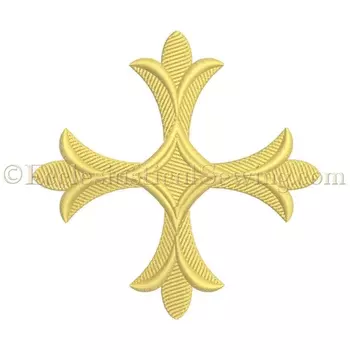
Ecclesiastical Sewing has created new designs for church vestments and paraments including patterns for things like altar hangings and special embroidery for pastors’ stoles. One of the design, called Luther Rose Gold Spray, has a vintage look with a special emblem. Another design, Luther Rose Quatrefoil, comes in different sizes for things like stoles and chasubles. There’s also a design for letters, like the ones used in liturgical embroidery, called Reformation VDMA. Another favorite is the Patonce Cross, available in various sizes.
Like this:
Like Loading...

Introducing the Christmas Rose Collection by Ecclesiastical Embroidery. This inaugural design features a single white rose with a yellow center and a gold crown. Available for instant download in various sizes, more designs will follow in the coming year. Stitched by embroidery machines, these designs celebrate the gifts of the Christ Child’s birth.
Like this:
Like Loading...

The book is titled “English Medieval Embroidery Opus Anglicanum,” and has been published in association with the Victoria and Albert Museum. The book is the result of the research that was undertaken in preparation for the Opus Anglicanum Exhibit. The first major exhibit on the topic of Medieval Embroidery in almost fifty years. The book created for the exhibit expected to become the standard work of reference. It includes detailed illustrations of works in the exhibit as well as comparable pieces from other collections to aid discussions.
Like this:
Like Loading...
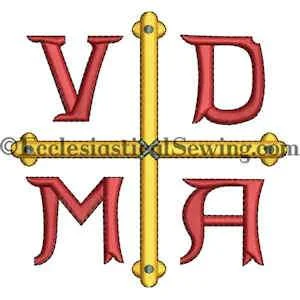
Our collection of digital machine embroidery designs, offers most liturgical machine embroidery designs in a wide range of digital files. File formats are DST, EMB, EXP, HUS, JEF, PCS, PES, and XXX. Some formats may not be available for certain designs based on size. Some designs, such as the VDMA Cross Symbol are original designs that we’ve created.
Like this:
Like Loading...
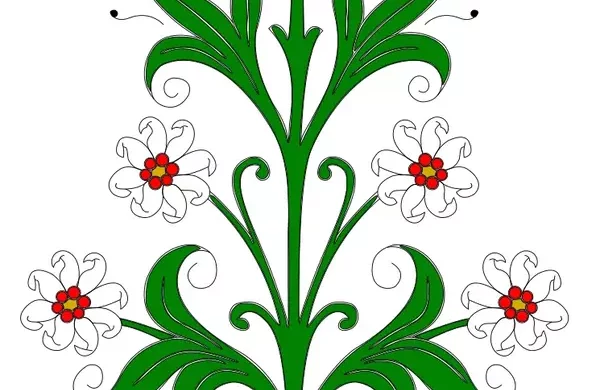
The ancient Israelites worshiped in the Tabernacle and later in the first Temple, which was the stationary building that replaced the Tabernacle. God instructed Moses exactly how to build the richly ornate Tabernacle and the Israelites used this mobile worship space for many years. In the reign of King Solomon, no expense was spared in the construction of the first Temple. This Temple was then sacked and many years later it was rebuilt as recorded in Ezra. Finally, King Herod renovated and added the second Temple, which was then destroyed in 70 A.D.
Like this:
Like Loading...
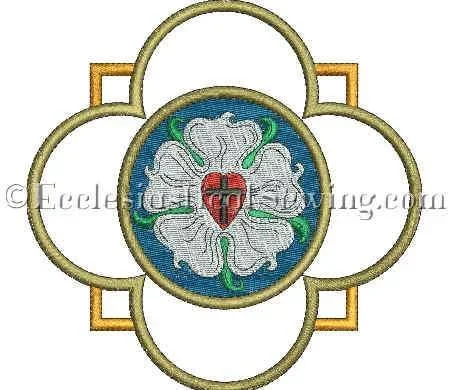
It began when Martin Luther posted his theses, sparking changes in church history. Although denominations split, they kept some traditions, like special church clothes. Ecclesiastical Sewing preserves these traditions by making church clothes for different churches. Studying church history helps us see what’s the same and what’s different. Ecclesiastical sewing is a way of making beautiful things for God.
Like this:
Like Loading...

Like the majority of modern ecclesiastical vestments, the cope has its origins in ancient garments. The Cope–Norris, unlike other vestments, is a bit of a mystery. With an unknown origin, its ancestor could be either the garment known as a paenula, the lacuna, or the buyers.
Like this:
Like Loading...
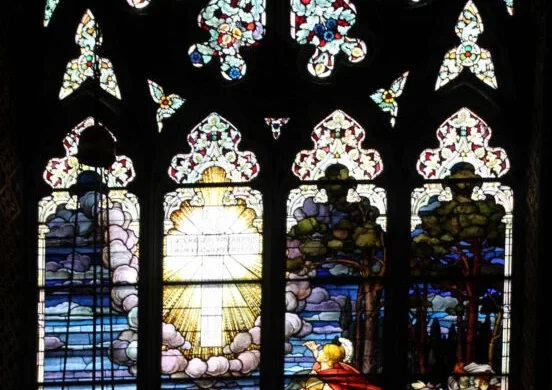
September 14th is noted as Holy Cross Day, which is celebrated in both Eastern and Western Churches around the world. The Church of England marks this festival day with the use of the color Red. Holy Cross Day was introduced into the Lutheran Church-Missouri Synod in 1982, yet this festival may be unfamiliar to many Lutherans today. The history of this festival dates back to the time of Constantine and his mother, St. Helena.
Like this:
Like Loading...
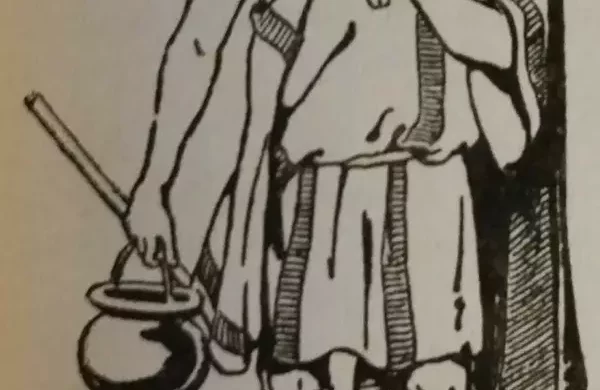
The Pallium-Herbert Norris History The Pallium-Herbert Norris: From the 6th century till the 1st century B.C., the Greeks wore a particular linen or wool garment. People of the working… Read more The Pallium-Herbert Norris →
Like this:
Like Loading...
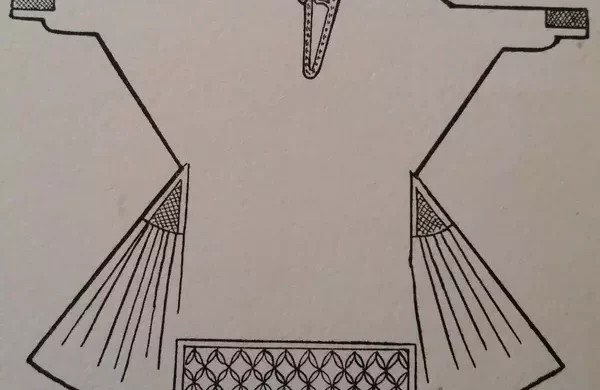
he Alb is a vestment that can trace its origin to six ancient garments: the Kolobus, the Tunica, the Colobim, the Tunica Talaris, the Subucula, and finally the Tunica Alba. These garments were common in Greek or Roman times, some garments being used by both cultures. They are not six manifestations of one garment, but rather six that are distinct enough to make note of the differences.
Like this:
Like Loading...
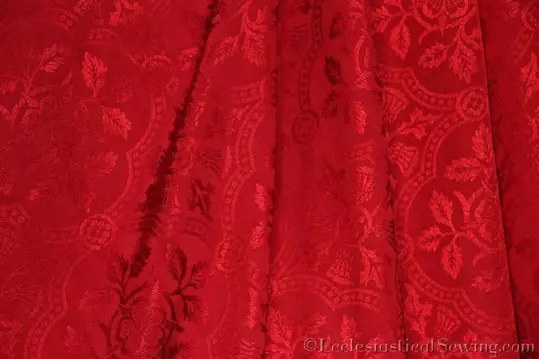
Cloister is a reversible symbolic pattern that dates from around the year 1900. If one looks closely, it is easy to see the two main design features of the Scottish Thistle and the English Rose which were popular at that time. Cloister is a lighter-weight ecclesiastical fabric that would work well for making stoles, chasubles, tunics, dalmatics, chalice veils, and other vestment pieces. Cloister would work well with machine embroidery when the proper stabilizers and backings are used.
Like this:
Like Loading...
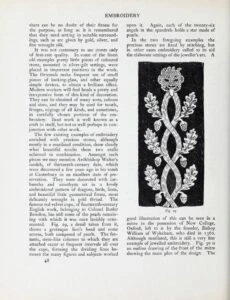
In the late 1800s, Mary Barber created a lovely collection of many examples of Opus Anglicanum.
Like this:
Like Loading...
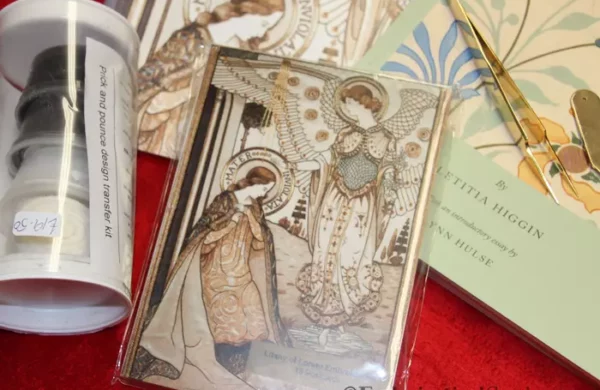
Wishlist of the Royal School of Needlework for years, plans were cancelled by scheduling conflicts. Yet, browsing to their online store provided a silver lining. The Handbook of Embroidery catalog and some enticing embroidery While missing out the classes, the excitement of exploring these ecclesiastical embroidery treasures brings comfort.
Like this:
Like Loading...
















You must be logged in to post a comment.